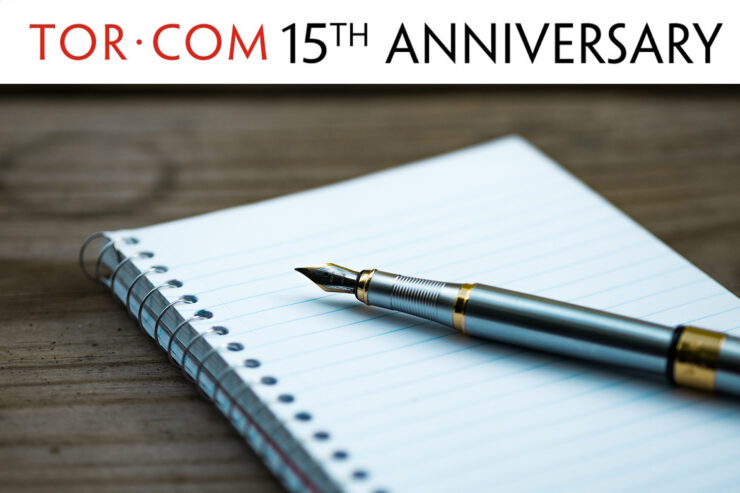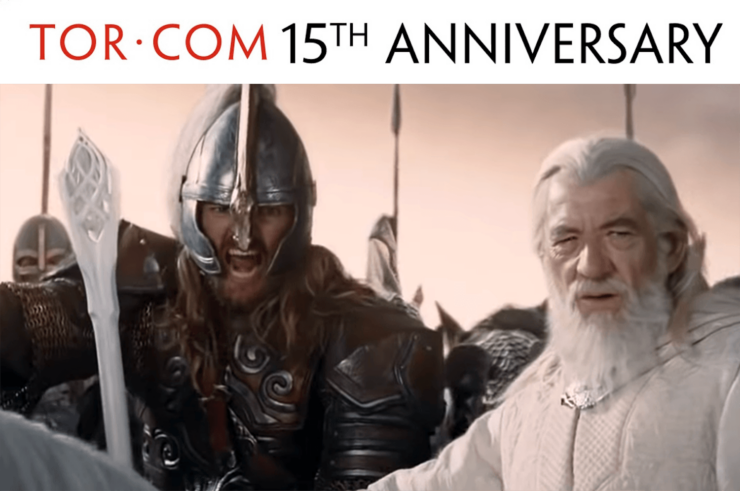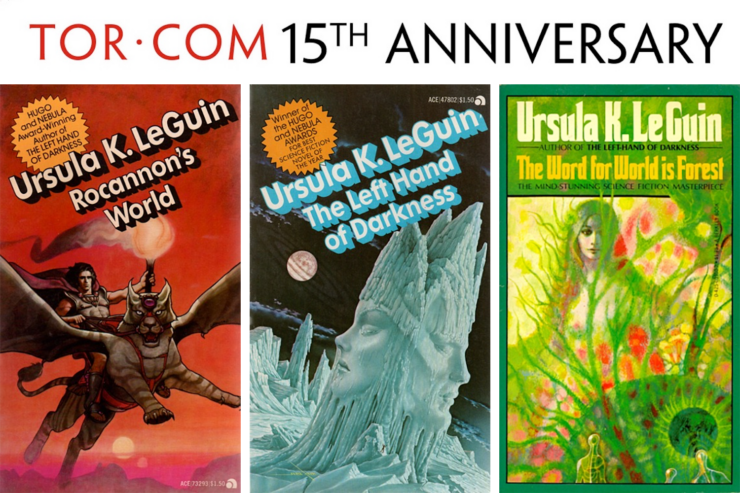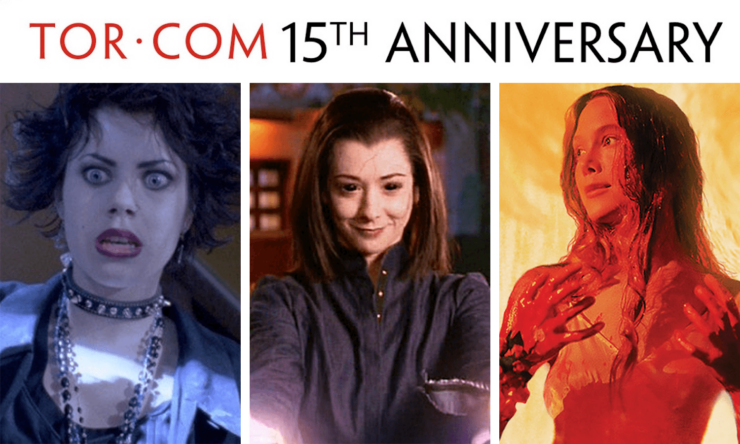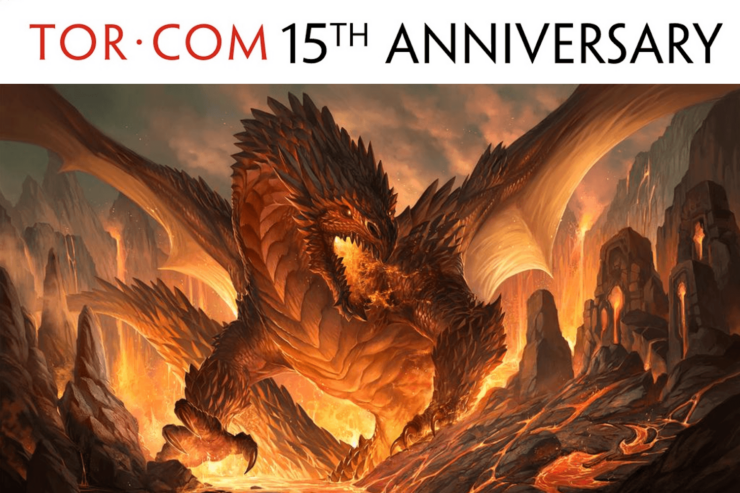1
Content Warning: Police Brutality, Violence
At some point on the night of November 24, 2015, the Foodtown grocery at 148th and St. Nicholas caught fire.
In the spring of that year, I had graduated from Columbia Law School and was, that fall, living in Harlem and working as a Volunteer Assistant Attorney General and Civil Rights Fellow with the Office of the New York State Attorney General. Twice-daily, five days a week, I would pass that Foodtown grocery store, heading to and from a job where I and fewer than a dozen others were tasked with enforcing federal and local civil rights laws for the State of New York. By the time I had passed that intersection the morning after the fire, the front window was gone and inside was nothing but bitumen.
A haze hung over much of that morning. It followed me down into the Financial District where we were headquartered at the time. Despite the luminosity outside, my office was shrouded in darkness. I’d made the mistake the night prior of watching the recently released dashcam footage of Laquan McDonald’s final moments. The incident itself takes place near the end of the nearly seven-minute clip. Much of the video’s body is taken up with reckless driving and distorted sound such that one hears, instead of a siren wailing, a dying thing, drowning. Such videos were legion back then. Social media was lousy with them. They spawn and consume Facebook newsfeeds and Twitter timelines like cancer cells. At some point, they lose their shock and induce only numbness, in part because the result is almost always the same: that cavernous yawning that faces the colored American public where justice or restitution or vengeance should be found. Sometimes, however, the horror leaps back out and becomes a visceral, churning thing. It scoops out insides and it renders nerve endings more sensitive, sets them afire, and it cripples the muscles that hold one up. The heart deflates, and one feels, instead of a deadening, a dying.
I joked morosely with a South Asian colleague about “calling in Black” that morning. There we stood, on our floor, saddled with our mission of enforcing the laws guaranteeing civil rights for the people of the State of New York, and Chicago had purchased so much real estate in our minds.
A year prior, November 25, 2014, I woke up to news that the grand jury had declined to indict Darren Wilson for the murder of Michael Brown. The following week, Daniel Pantaleo found the same result, following his murder of Eric Garner on Staten Island.
Facebook had been prompting users to share “memories” of specific days in years past, anniversaries of a sort where you can re-post particular status updates or pictures or linked pages. November 25, 2014, I’d written the following Facebook status: “I just…I don’t know how not to be angry anymore.” 19 Likes. 1 Comment. 1 Share.
The weekend prior to the grocery store fire was the Harvard-Yale football game. At the Black Yale tailgate was a throng of the radiant people of color I was privileged to spend time with, some of whom I met in person for the very first time that day. The day was a reminder that joy can take corporeal form, that luminescence can be a felt thing, an inlying experience where the entire body is rendered clement. A blanket has wrapped itself around one’s insides. Smiles glow. Hugs calm the chaos of warm things. Where normally one speaks, one instead sings. Dancing becomes a larger thing than oneself, so that we moved as a swarm, as a glorious, teeming mass caught beneath that tent, a single organism thrumming with life and love. Of self. Of each other. Of the fact of our Blackness. The weekend of the Yale-Harvard football game was also notable because I got to spend time with a man I’d styled as a bit of an older brother.
We spoke, and when I asked about these videos of police-initiated executions and atrocity porn, I had ISIS on my mind. At what point does it become that? Atrocity porn? In the back of my mind was an image from a glossy page of Dabiq, the monthly online magazine once upon a time produced by ISIS. In it, a child holds a severed head aloft. Towards the end of the video of Laquan McDonald’s murder, he lies still on the ground, and puffs arise from his body and from the concrete where bullets strike. Moments earlier, the first bullets had twirled him in a grotesque pirouette that preceded his collapse. To write of his death this way approaches sacrilege. There was nothing beautiful or aesthetically intelligent about the destruction of his body. There isn’t a sentence in the world that can make it anything other than the abominable and heinous act it was. But the words are what to which I flee when confronted by the confusing and the hurtful and the lessening. We were both writers, this man and I. Words were how we organized the universe. So, after Harvard-Yale weekend, this was how we talked about Laquan McDonald and Facebook and how it fucked you all the way up. Subject and verb and simile and metaphor. The murder is the severing of the head. Social media is the pike on which it is planted.
The video of journalist Steven Sotloff’s beheading shows him wearing a lapel microphone. The wind would have made sound difficult to catch. The video does not show the actual act. Just the beginning, a fade to black, then the result. The camera then pans to the next hostage. It’s gratuitous and primal and obscene. No message superimposed on the video can counter the exorbitant violence. The exorbitant violence is the point. Further along the spectrum, approaching the purely-gonzo atrocity porn, is the grainy cell phone video footage taken by jihadis. Snapchats of executions. Vines replaying mutilations. A masked jihadi holding up a severed head in one hand and throwing up a gang sign with the other. Caption: “Chillin’ with my homie…or what’s left of him.”
July 7, 2016: I’m just over a month away from the end of my time as a Civil Rights Fellow with the New York Attorney General’s Office. I’m proud of the work I’ve done, assisting in investigations of employment discrimination, handling settlement negotiations with corporations that broke the law, working on campaigns to ease re-entry for the formerly incarcerated. I felt as though I’d played a part in progress. That morning, I log onto Facebook to see status updates about a video that had been posted the night before. A livestream. Before I can click it open, it autoplays, and I watch Philando Castile die on camera.
Gene Demby wrote in August of 2015 about the particular psychic toll that afflicted reporters of color who had fallen upon this particular beat: Black reporters reporting Black death.
He writes:
As calls for newsroom diversity get louder and louder—and rightly so—we might do well to consider what it means that there’s an emerging, highly valued professional class of black reporters at boldface publications reporting on the shortchanging of black life in this country. They’re investigating police killings and segregated schools and racist housing policies and ballooning petty fines while their loved ones, or people who look like their loved ones, are out there living those stories. What it means—for the reporting we do, for the brands we represent, and for our own mental health—that we don’t stop being black people when we’re working as black reporters. That we quite literally have skin in the game.
A genre of the same afflicts citizens of color in general. It’s still someone who looks like us who is collapsing amidst the recorded mutilation of his own body.
And when you find that name-turned-hashtag, or that latest released recording of dashcam footage pops up on Facebook, joy, along with the prospect of it, dies.
And there I was, walking past that hollowed-out grocery store that November night, writing. Struggling with the possibility that this writing does nothing.
I know it is a thing that brings me joy. I feel useful doing it, even if that feeling is an illusion, smoke keeping me from seeing a difficult truth reflected back at me. Writing will not rebuild that Foodtown that went up in flames that night. It will not restock it with cereal and toilet paper and canola oil. But terror abates when I write.
Since before Ralph Ellison’s Invisible Man, narratives by Black Americans about Black Americans have performed a sort of zoological function. In conjunction with or perhaps with utter disregard for a work’s literary merits (depending on its audience), a reader might approach such a book the way they might watch a documentary. Smooth narration, structurally sound. A chance to learn something new about seahorses. “A window into the condition of contemporary Black America” reads the breathless blurb or pull-quote on the cover. And in that book are likely breathtaking sentences, arresting paragraphs, gorgeous scene-endings depicting the worst day of a Black character’s life. The sentences will sing in a story about slavery. The hunger for this sort of story exists outside the Black writer. After all, it was William Styron, descended from slaveowners, who won the Pulitzer for The Confessions of Nat Turner. But publishing is so often a closed ecosystem, and when that hunger is in the air, that air cannot help but enter the lungs of a Black writer let in through the doors. The White Gaze is the Eye of Sauron twice. Whether or not as a conscious decision, you write in or through or around that hunger. And maybe you give them Illmatic. You give them reportage in the form of fiction. You give them drama and beatific prose and, for the non-Black audience, that transcendent sense of transport that good fiction always offers. You also give them an education.
Yet to depict Blackness as existing wholly at the same dolorous register is not only incorrect, it’s boring. Absent the vibrancy of Dhonielle Clayton’s The Belles, absent the joyous kineticism of a Miles Morales at the height of his powers, absent the scope of Chimamanda Ngozi Adichie’s Americanah, absent the cool-cat finesse of Walter Mosley’s Easy Rawlins series, depictions of Blackness in American publishing—in American storytelling—would be that one style of cuisine you find yourself in the mood for on Tuesdays. We had sushi last night; how about something to do with a runaway slave? So the duty of the Black Writer then becomes “diversify depictions of Blackness.” Black women in NASA’s space program, black mermaids, black bounty hunters in toxic relationships with black shapeshifters, black expats, black earth-breakers, black girls in giant robots. Then police enter the home of 26-year-old Breonna Taylor in Louisville, Kentucky and shoot her eight times before she is pronounced dead on the scene.
Having embarked on a profession wherein I face and construct pattern and motif and structure, where linkages of theme and imagery are tied just so in order to hold the tapestry together, I look at the increasingly diverse depictions of Blackness in American storytelling. And I look at the murders that, through the efforts of activists on the ground, made national news in May 2020. And I know intellectually that learning something about the lives of others is supposed to make one more tolerant. But I can’t help fear that the more non-Black people know about us—the more white people know about us—the more they have to hate.
To look at Emmett Till’s face in 2020 isn’t to see a boy but to see an act. A catalyst. Mamie Till knew this as early as 1955, that her son had been mutilated into a symbol. She is recalled to have said, on the decision to have an open casket at his funeral, “I wanted the world to see what they did to my baby.” I’m not in the minds of every single person who retweeted or shared or reposted video of George Floyd’s murder or Walter Scott’s or Eric Garner’s or Philando Castile’s or Tamir Rice’s, but I wonder how many of those people, in their rush to signal their own personal outrage and, by extension, their virtue, saw a specific and individualized human being and how many saw an act. A catalyst. The beheading performs the same function, the erasure of humanity, so that all that remains are grunts and fucking and scratching ourselves. I know that watching video of police-initiated executions does something in me that brings me closer to that, hits a particular pitch at which the tuning fork is activated. But to watch it is also to be reminded of the activism that attends the aftermath and the preceding, that Laquan McDonald was more than a figure in a snuff film. They all were.
Still. I had to be told that George Floyd cried for his mother as that Minneapolis police officer crushed the life out of him. I had to be told because I could not make it far enough into the video to hear it for myself.
Before long, the Foodtown stopped being a husk and became, once again, some place in which people moved and bought sustenance. A place where babies wailed while being held by their mothers, where young adults shopped for dinner ingredients, where people went about the business of being human. A teeming mass, contained beneath a tent. A single organism thrumming with life.
And something of this will be turned into a book, I remember thinking at the time, walking past the restored grocery store. A book where a black boy can joke and be young and be smart and be angry and aimless and have a family, and writing it will feel less like writing and more like paying witness. And he’ll have a sister—in fact, she has already been written—and she’ll be capable of unimaginable things. She’ll want to save him from this. And she’ll be able to fly.
Across the street and a few blocks down from that Foodtown was a bodega where I would get a more-than-occasional bacon-egg-and-cheese on a roll to get me through my commute and much of the morning.
I knew that corner and that bodega would be in my book.
At some point on the night of May 29, 2020, snipers positioned themselves on rooftops throughout Dallas, Texas. That same evening, according to reports from The Guardian, New York state senator Zellnor Myrie and state assemblymember Diana Richardson were pepper sprayed and handcuffed. Among those also chased by police during the protest outside Brooklyn’s Barclays Center was Lynn Nottage, two-time Pulitzer Prize winning playwright. In Louisville, Kentucky, that night, TV reporter Kaitlin Rust was reporting on local protests when a police officer aimed at her and her cameraperson and fired pepper bullets. In Atlanta, demonstrators set fire to a police cruiser during a protest outside the CNN building. What many news stories have failed to report is that hiding in that CNN building is a police precinct.
In Dallas, a reporter for the Dallas Morning News asked a protester what had brought him out that night. The man began to weep. Through his tears, he said, “I write to my senators. I write to my representatives. I just don’t know what to do anymore”.
The media waterfalling down my Twitter timeline and flooding through Instagram Stories this last week of May 2020 evoked and evokes a different genre of feeling from what happens when I watch someone who looks like me be murdered on the other side of a screen. I watch these things like I watched Minneapolis the night prior.
In one video during that night’s conflagration, you can see the city in the distance. Bent columns of smoke billow into the air. The 3rd Precinct has been set on fire. Just next to it, fireworks shoot into the sky.
On my back porch, I held my phone in my lap and I watched that precinct burn and I saw those fireworks light up the night sky and I thought, “good.”
And something of this is in my book, I remember thinking at the time. A book where a black boy can hurt and get older and be smart and be sad and want to escape occupation and fail and have a family, and where having written it felt less like writing and more like paying witness. And this boy had a sister and she was be capable of unimaginable things. She wanted to save him from this. And she was able to fly.
On Minnehaha Avenue South, bounded by Interstates 35 W and 94 on the west and north respectively and by the Mississippi River to the east, beneath a flowerhead of fireworks was a police precinct ablaze.
I knew that image. It was in my book.
2
The week of these protests began with video of a white woman in Central Park who was asked to leash a dog she had brought into an area where it wasn’t permitted. She proceeded to call the police on the black man who had admonished her to not break the rules of the space, claiming falsely that the man was threatening her. During the video, when it appears she is not getting the desired response from Dispatch, she raises the pitch of her voice, adjusts the tenor, and tweaks the decibels to communicate distress and threat of imminent harm. If I pretend hard enough, the police will come and remove this man for me. And many who saw that video knew what “remove” would entail. Images of Emmett Till’s mutilated corpse were not far from the cognitive surface. The week ended with a police precinct in flames. All throughout, people in the publishing industry have reached out—editors, agents, bloggers, reviewers, fellow writers—recognizing the enormity of the tax suffered by Black Americans, the water having boiled over the lip of the pot yet again, sizzling as it hits the stove. And they’ve offered condolences and solace. They’ve sent me their surprise at having discovered how much fear of white Americans governs my waking hours and, on the heels of that, they’ve sent me their sorrow. By Friday night, it had become difficult to keep up with all the messages, to assure loved ones of my well-being, to provide links to bail funds and other apt repositories for donations, to give advice, to say something, to combat that impulse.
And therein lies the conundrum.
Protesters gather on one knee and raise their hands above their head in Memphis, Memphis where Dr. Martin Luther King Jr. was shot in the face and killed, and I can’t escape the dual-barreled fact that I’ve made a burgeoning career out of words and, at the same time, have skin in this game. How responsible is it, during this period of unrest and others, amidst the call for Black voices on the subject, to want time to be left alone, to chase joy in the hum of an Xbox?
The “See Something, Say Something” of being a Black writer in an America that has never reckoned with its Original Sin comes with the added mandate of saying something “responsible.” Perhaps dusting off a platitude or urging calm or assuaging worries of division. Whitewash an MLK quote, dress it as inoffensively as possible, dab some Eau de “It’s Okay” on its neck, and send it out into the world. Perhaps caution against the destruction of property. Castigate the black “looters” while slyly avoiding mention of the fact that they live in communities less under-resourced than pillaged and built on land not found but stolen. And be sure to tut-tut confrontation with police, casting your concern as “you know how these cops are” rather than “don’t get out of line.” It’s about your safety, you see. Encourage the retweets and the Instagram posts about cross-racial solidarity. Don’t worry about whether or not the work is being done off-screen. It’s advised, also, that you not point out the hypocrisy in cheering revolution on screen while ignoring, even vilifying it outside your window. Politics has no place in speculative fiction, you are told. Not in a novel, not in a piece of non-fiction. Why bring up race? We were talking about Rand al’Thor.
Because, you see, when you’re on that stage and we get to the Q&A and that audience member raises their hand and is called on and asks their question, they’re not looking for answers, they’re looking for hope. And you’re to give it to them. When they ask for ideas on how to be of service, you give them that too. You give and give and are afforded only a few opportunities every three or four months to tell people to stop asking and do their own homework before you’re called upon to give and give and give again. To point people in the direction of organizations they can donate to, to advise them on how best they can respect the efforts of local activists and not Columbus their way into a movement, to inform them of the varied vehicles through which the existential threat of white supremacy makes itself manifest in your life day after day after day.
You are not permitted to watch a police precinct erupt into flames under a canopy of fireworks and whisper to yourself, “good.”
People have pointed to the coronavirus pandemic as having shown us a glimpse of an alternate reality, where residents of East Hollywood can see a smogless sky, where industries that demanded people live in overpriced cities for work are now forced to reveal that work-from-home was always a viable option, a reality where capital’s vice-grip on American society has loosened just a little bit. But the pernicious, persistent thought on the heels of that is the intractability of so many societal inequities. How do we know that, if this ends, we don’t revert to a shade of our Old Normal? How do we know that we won’t return to the embrace of familiar hellions?
The pandemic has laid bare the horrors we regularly enact—through institutional neglect and outright cruelty—on our incarcerated. It has laid bare the racialization of socio-economic inequality in titanic and tragic fashion. And it has laid bare just how much we undervalue those we have discovered are invaluable. Our nurses, our grocery store clerks, our postal workers, our bus drivers. All of these are suddenly “essential.” (We dare not say “expendable.”)
If my profession demands that I am constantly imagining alternate realities—possible futures and parallel presents—then how do I explain this pessimism? The New Deal that pulled the United States out of the Great Depression was unevenly distributed, as every future that has arrived inevitably is. (I tip my hat to William Gibson.) Decades after the expansion of queer rights following the devastation of the AIDS epidemic, rates of homicide and neglect among queer communities of color reveals a stark divide. And looming over all of this is corporate co-optation. Who hasn’t yet seen a tv advertisement or YouTube ad from a corporation replete with soothing music and a message that We Care?
It feels irresponsible to be publicly pessimistic at a time like this. To look at the rates of COVID-19-related deaths among whites and among Black and Latino populations in the US and see continuity, even as news organizations and leaders increasingly sound the alarm. To look at how easily we cast aside concern for the elderly and chalk it up to the cost of doing business and see continuity. To look at the ways in which China’s debt colonialism is further crushing the promise of a self-sustaining African infrastructure and see continuity. To look at the current societal rupture, the collapse of the house whose already weakened foundation was further diminished by post-Great Recession austerity policies, and expect continuity. To look at cops firing unprovoked into homes and ramming their vehicles into crowds and blinding journalists, to see American police revealed for the unreformed and irreformable cartel they’ve long been, and expect continuity.
Starting points in dystopian fiction are generally post-Collapse. The zombies have been let loose, a significant chunk of the global population has already succumbed to lethal pathogens, the waters have already risen. Why does this seem so much like the easy part? The assumed part. If there is optimism in these stories, it lies in individual courage, individual rescue, individual salvation. What are the contours of its systemic equivalent?
The night George Floyd was killed, police fired tear gas into a crowd of unarmed, nonviolent demonstrators. They did this during a pandemic that features a respiratory virus. As I write this sentence, police are firing tear gas into a crowd of demonstrators in Oakland, California.
This is about where the hopeful platitude would go. Or, at least, if I want a messier, grittier button to an essay, where some vague desire for a better future might fit. I might refer back to that earlier bit about the Harvard-Yale game, being a part of that glorious black organism, swag-surfing under that tent, rejoicing in the beautiful, living chaos of warm things. Or maybe the rebuilt Foodtown grocery store is due a repeat appearance. Maybe a line about moral imagination that loops back around somehow to the aforementioned Duty of the Black Writer™. But the rhythm is off. And hope was not what I felt when I wrote Riot Baby. It is not what I feel now. I felt hope neither in witnessing the consequences Amy Cooper suffered for what she did nor in seeing charges of third-degree murder and manslaughter brought against the officer who killed George Floyd. What happened after the snuff film of Ahmaud Arbery’s murder inspires no hope. Neither do the pledges of legislators to reconsider the use of no-knock warrants by police following the shooting death of Breonna Taylor. In the face of an Aggressive Menace dripping with contempt for your humanity and wishing, when it cannot exploit you, to punish you, to terrorize and torment you, what use is hope?
My vision of fireworks returns.
Originally published June 2020.










